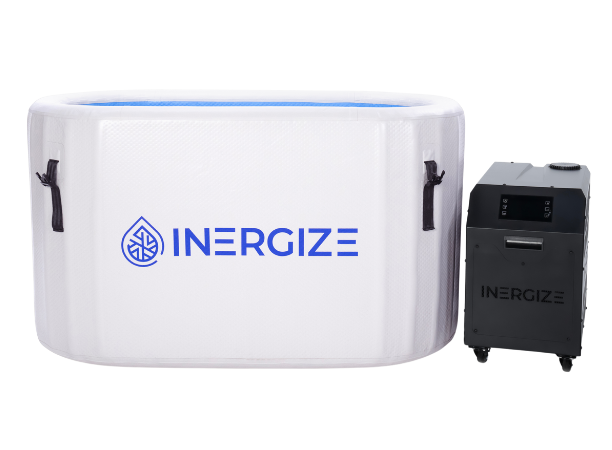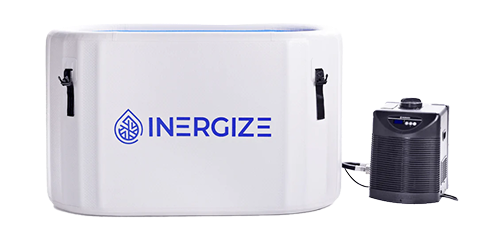Can You Take a Hot Shower After a Cold Plunge

Cold plunging has gained significant popularity in recent years, becoming a staple in the routines of athletes, wellness enthusiasts, and individuals seeking to boost their health. The practice involves immersing oneself in cold water, often between 50°F to 59°F (10°C to 15°C), to reap benefits such as improved circulation, reduced inflammation, and enhanced recovery. However, a common question arises: Is it advisable to take a hot shower immediately after a cold plunge? This article explores the physiological effects of transitioning from cold to hot temperatures and provides guidance on best practices for post-cold plunge recovery.
Understanding Cold Plunging
Cold plunging, or cold water immersion, is an ancient practice with roots in various cultures, from Scandinavian ice swimming traditions to Japanese Misogi rituals. The sudden exposure to cold water triggers a range of physiological responses in the body. These include vasoconstriction, where blood vessels narrow to reduce blood flow to the skin and extremities, preserving core body temperature. The shock of cold water also stimulates the release of endorphins and adrenaline, leading to increased alertness and a sense of well-being.
The benefits of cold plunging are numerous. It can accelerate muscle recovery by reducing inflammation and swelling, enhance the immune system, and improve mental resilience. Regular cold exposure has been linked to increased metabolic rate and better stress management.
The Appeal of a Hot Shower Post-Cold Plunge
After enduring the intense chill of a cold plunge, the allure of a hot shower is undeniable. The desire for immediate warmth and comfort is a natural response to the stress of cold exposure. A hot shower promises rapid relief from the cold, soothing muscles and providing psychological comfort. The contrast between cold and hot can also feel invigorating, leading some to believe it enhances the overall experience.
Physiological Effects of Transitioning from Cold to Hot
Switching abruptly from a cold plunge to a hot shower imposes significant demands on the body's regulatory systems. During cold exposure, vasoconstriction occurs to conserve heat, which can elevate blood pressure. Moving immediately to a hot environment causes vasodilation, where blood vessels expand, leading to a sudden drop in blood pressure. This rapid shift can strain the cardiovascular system, potentially causing dizziness, fainting, or cardiovascular stress.
Dr. Andrew Huberman, a neuroscientist and professor at Stanford University, explains:
"Sudden transitions from extreme cold to hot temperatures can challenge the body's homeostatic mechanisms. It's essential to allow the body to adjust gradually to prevent undue stress on the cardiovascular system."
Source: Huberman Lab Podcast on Cold Exposure
Moreover, the immediate application of heat may counteract some of the benefits gained from the cold plunge. For instance, the anti-inflammatory effects of cold exposure could be reduced if heat promotes vasodilation and increases inflammation markers.
Expert Opinions and Scientific Perspectives
Research on contrast therapy, which involves alternating between cold and hot treatments, provides insight into this topic. While contrast therapy is used in some therapeutic settings, it's typically structured with specific timing and temperature protocols to maximize benefits and minimize risks.
A study published in the Journal of Strength and Conditioning Research examined the effects of contrast water therapy on recovery. The researchers found that while contrast therapy can aid in recovery, improper application may negate the benefits of cold immersion or place additional strain on the body.
Source: "Contrast Water Therapy and Recovery" – Journal of Strength and Conditioning Research
Health professionals generally advise caution when combining extreme temperatures. Dr. Jessica Matthews, Assistant Professor of Integrative Wellness, notes:
"Allowing the body to naturally return to its baseline temperature after cold exposure supports the physiological adaptations that confer health benefits. Immediate heat application may interfere with these processes."
Benefits of Natural Rewarming
Letting the body warm up gradually after a cold plunge offers several advantages. Natural rewarming allows for a steady return of blood flow to the extremities, reducing cardiovascular stress. This gradual process supports thermoregulation, where the body maintains its core temperature efficiently.
Additionally, prolonged vasoconstriction from the cold plunge continues to reduce inflammation and muscle soreness during the rewarming phase. By avoiding immediate heat exposure, you sustain the anti-inflammatory benefits and enhance recovery.
Alternative Ways to Warm Up Safely
Instead of jumping into a hot shower, consider alternative methods to warm up that promote gradual temperature adjustment:
- Light Physical Activity: Engaging in gentle movements like walking or stretching generates body heat naturally, stimulating circulation without shocking the system.
- Warm Clothing: Dressing in layers of warm, dry clothing helps retain body heat. Pay special attention to covering extremities with gloves and socks.
- Warm Beverages: Consuming warm drinks such as herbal tea or warm water with lemon can raise your internal temperature gently and provide comfort.
- Indoor Environment: Moving to a warm room allows your body to adjust without the abrupt change that a hot shower would introduce.
These methods support a smooth transition back to normal body temperature while preserving the benefits of the cold plunge.
Guidelines for Post-Cold Plunge Recovery
To maximize the health benefits and ensure safety after a cold plunge, follow these best practices:
- Dry Off Thoroughly: Remove wet clothing and use a towel to dry your body completely to prevent prolonged exposure to cold, which can lead to hypothermia.
- Dress Warmly: Put on warm, dry clothes immediately after drying off. Layering helps trap heat and allows you to adjust as your body warms up.
- Engage in Gentle Movement: Light exercises like yoga stretches or a relaxed walk can promote blood flow and aid in natural rewarming.
- Stay Hydrated: Drink warm fluids to assist in raising your core temperature and support metabolic processes.
- Wait Before Hot Showering: If you prefer a hot shower, it's advisable to wait at least 30 minutes after the cold plunge. This delay allows your body to adjust gradually.
- Monitor Your Body's Response: Pay attention to how you feel. If you experience prolonged shivering, numbness, or discomfort, consider seeking medical advice.
Conclusion
Taking a hot shower immediately after a cold plunge is generally not recommended. The abrupt temperature shift can place unnecessary stress on your cardiovascular system and may reduce the therapeutic benefits of cold immersion. Allowing your body to warm up naturally supports better recovery, maintains the anti-inflammatory effects, and promotes overall well-being.
By understanding the physiological impacts and following safe post-cold plunge practices, you can enhance the benefits of your cold immersion experience. Remember, gradual rewarming is key to maximizing health advantages and ensuring safety.
Ready to incorporate cold plunging into your wellness routine safely and effectively?
Explore Inergize Health's premium Cold Plunge Tubs and Chillers, designed to provide an optimal cold immersion experience. Our products prioritize safety and comfort, supporting you in reaping the full benefits of cold therapy.
- Discover Our Products: Visit our Cold Plunge Collection to find the perfect tub for your needs.
- Learn More: Check out our Blog for additional resources on cold plunging best practices.
- Get Expert Advice: Reach out through our Contact Page for personalized guidance.
Embark on your journey to enhanced health and vitality with Inergize Health!






